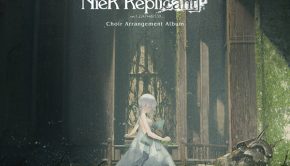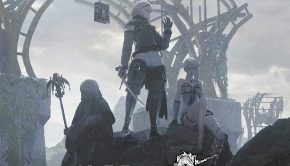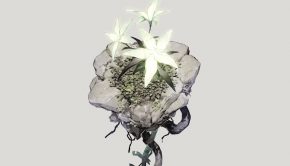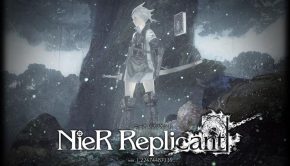Takayuki Aihara Profile
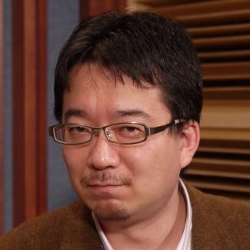 |
Also Known As: 相原隆行 (あいはらたかゆき) / J99 / John99 / Midori Maki |
| Date of Birth: September 2, 1968 (Tokyo) |
|
| Residence: Tokyo |
|
| Game Works: Galaxian, Soul Blade, Street Fighter EX, Drakengard |
|
| Official Site: Japanese Site |
History
| Organisation | Type | Tenure | Role |
| Studio Pierrot | Animation Studio | 1988 – 1991 | Apprentice Scenario Writer |
| Namco | Game Developer | 1991 – 1996 | Composer, Sound Designer |
| Troubadour Records | Record Label | 1992 – 2000 | Co-Founder, Producer |
| Sampling Masters | Music Group | 1993 – 1999 | Artist |
| Oriental Magnetic Yellow | Music Group | 1994 – 2001 | Co-Founder, Artist, Drums |
| Studio Carnaval | Music Production | 2000 – 2011 | Founder, President, Composer |
| Epicurus Corporation | Pachinko Manufacturer | 2007 – 2009 | Sound Manager |
| GE-ON-DAN | Artist Collective | 2010 – 2011 | Member |
| Yamasa | Pachinko Manufacturer | 2011 – | Sound Director |
Biography
A veteran freelance composer, Takayuki Aihara has demonstrated his creativity through numerous contributions to video games and album releases. Born on September 2, 1968 in Tokyo, Aihara enjoyed a wide range of music from a young age — spanning classical greats to contemporary favourites. These experiences encouraged him to learn to perform a multitude of instruments and start composing his own music. While still a teenager, the aspiring musician participated in the Automation — a predecessor to the internationally popular G-Clef. Also having a long-standing passion for animes, Aihara felt privileged to be taken on at Studio Pierrot at the age of 19. He served as an apprentice scenario writer for several titles, including Hi-Speed Jecy, under veterans such as Narimitsu Taguchi. Supplementing his continuing band experiences, these roles gave him an appreciation of the artistic and technical aspects of storytelling through visual media. Further cultivating his artistic interests, Aihara was also a finalist of Sony’s Gear Head Music Audition dedicated to desktop music in 1991. Later that year, he successfully applied to join the sound team of Namco.
At Namco, Aihara was thrown into the deep end with a series of challenging assignments. He was initially asked to create the entire soundtrack for the last arcade game made on the Namco System 1, Tank Force; making the most of the YM2151 chip, he hybridised the rhythms of military marches with light-hearted pop influences. After this striking debut, he created music for the various attractions at Namco’s theme park Wonder Eggs with the unit Xeno-Gramophone. Most notably, he produced the majority of the score for the threatre-sized space shooter Galaxian 3: Project Dragoon; channelling influences from Star Wars and sourcing high quality orchestral samples, his epic score was admired by his colleagues. Strengthening his reputation for producing cutting-edge sounds, Aihara went on to supplement the racing game F/A with three hard techno pieces and various sound effects, before taking the sole responsibility for the fusion score to the fighting game Knuckle Heads; while the latter’s character-focused approach was inspired by Street Fighter II, the score was a step ahead technologically with its roaring guitars and wailing shakuhachi. Aihara was also responsible for the entire sound production of the business games Dunk & Dunk and Sweet Factory.
Through his works on Galaxian 3: Project Dragoon and F/A, Aihara developed a collaboration with Namco veteran Shinji Hosoe. The pair established the independent label Troubadour Records in 1992, wanting to produce original compositions and band performances outside of Namco. Aihara was the director of the label’s first release, Be Filled With Feeling, and organised the participation of nine composers from across the games industry. His personal contributions, including the seven minute orchestration “Troubadour”, set the bar high for future releases. He worked on most of the company’s subsequent albums in directorial roles, establishing new concepts and collaborations with each release. His own versatile compositions also enhanced Great Wall, gtr, Tours, Game Over, and Zuki-In. Also joining his colleagues on the cover band Oriental Magnetic Yellow as a parody of Yukihiro Takahashi. In this role, he co-wrote several tributes to Yellow Magic Orchestra and offered atmospheric drum performances throughout their self-titled debut, Sonic Surveyor, and XO Breeds. In further highlights, he explored songwriting for the first time on Troubadour, commemorated the second anniversary of Namco’s theme park on The Story of Elds, and secretly penned album arrangements for the externally developed games Words Worth and Dragon Knight IV.
During his later years at Namco, Aihara took a number of roles of varying prominence. After being absent in the original game, he contributed a single piece — the slow-burner “Maximum Zone” — to Ridge Racer 2 alongside Hosoe, Nobuyoshi Sano, and Ayako Saso. The success of the release inspired the quartet to form Sampling Masters, a group dedicated to experimental techno production. He contributed two more pieces with the team on Rave Racer, combining all sorts of stylistic references into each. Aihara also made some moody electronic arrangements for the PlayStation adaptations of Tekken and Tekken 2, though did not return to subsequent instalments of the merging series. In further guest roles, he made contributions to Great Sluggers, Cyber Cycles, and Namco Classic Collection Vol. 1. The artist returned to a lead role on 1994’s Point Blank, adding to the frantic atmosphere with fast funk licks and unpredictable fusions. More impressive was his final score for the company, the arcade version of Soul Blade. After much consideration, Aihara elected to convey the 16th century setting and action-packed gameplay with grandiose orchestrations and bold samples. His approach directly inspired the hit scores for the Soul Calibur series thereafter.
After much consideration, Aihara left Namco to join the development team Arika during 1996. Having loved Street Fighter II, he was delighted to start work on a new trilogy of fighting titles under the direction of series’ creator Akira Nishitani. Taking the lead composing role on Street Fighter EX, Aihara took the series’ music in a new direction with hard-edged fusions of electronic and rock components; the leap to the CP2 sound chip enabled the composer to use high quality samples, and the contributions by fellow departees Shinji Hosoe and Ayako Saso also proved inspiring. He further reflected the contemporary direction of Arika’s music on the album Escape Goat, mixing originals with Street Fighter EX arrangements recorded by studio musicians. The composer proceeded to flesh out iconic stage themes such as “Arabesque” and “Amusementative Crime” for the title’s arranged album and console port before taking a more experimental approach on Street Fighter EX2’s productions. Following such cutting-edge scores, Aihara took a retrospective direction on another fighting title, Fighting Layer; he pumped the score with edgy yet uplifting guitar solos inspired by 80s rock movements. He was also responsible for sound effects production for Tetris: The Grand Master and several console ports.
While working on such productions, Aihara penned two solo albums released by Troubadour Records. On J99, he offered a series of emotional jazz and soul pieces using modern samplers. Inspired by its success, he explored Latin jazz styles throughout its infectious successor Carnaval. Also continuing to cultivate his involvement in two groups, his perplexing fusions coloured the electronic albums Sampling Masters 2, Sampling Masters 3, and Julianna’s Tsunashima. Remaining a member of Oriental Magnetic Yellow, Aihara was closely involved in the recording sessions for the band’s final three albums. Also free to collaborate on external game productions, he assisted Hosoe on the distinctive scores for Bushido Blade and Driving Emotion Type-S, and impacted on the rhythm game craze early on with catchy guest contributions to Pacapaca Passion and its two sequels. In further activities, he covered two anime theme songs, penned an enigmatic contribution for 2197, and produced remixes for DeviceReign, Battle Garegga, and The Story of L. During his final year at Arika, he enhanced the score for the PlayStation’s Street Fighter EX2 Plus with vibrant arrangements and took the music for the PlayStation 2’s Street Fighter EX3 in a more subtle direction.
Aihara left behind Arika and Troubadour Records during 2000 in order to form the independent company Studio Carnaval. One of his first assignments was Capcom’s One Piece Mansion, where he produced a light-hearted electronic score to accompany the puzzles and exploration. In stark contrast, his score for the downloadable game Sledge Blow focused on bombastic orchestral elements and received a soundtrack release with bonus arrangements. Also adapting his musical approach to a range of sports game, Aihara worked on ESP’s Victorious Boxers: Ippo’s Road during his first year as a freelancer; combining rocking action themes with the occasional orchestral fanfare, the composer recreated the feeling of a boxing arena. He built on these foundations when scoring its two sequels for PlayStation 2 and simplified his approach for the DS’ instalment. Nevertheless retaining ties with Arika, he made guest contributions to the rhythm games Technictix and Technicbeat. In further nostalgic collaborations, Aihara supplemented PSP’s Ridge Racer and Ridge Racer 6 with new pieces, and worked closely with Hosoe on Super Dragon Ball Z and Zatch Bell: Mamodo Battles. Continuing to make an impact internationally, his music was also featured in the US exclusive Chicago 1929 and Japan-only Let’s Make a J-League Pro Soccer Team 2002.
During his time as a freelancer, the composer also found a niche in several other fields. The artist was one of the first to embrace sound production for mobile phone games and carefully overcame memory problems on five scores for Dwango; his offerings spanned Sengoku era battlers, to space fantasies, to adaptations of Western classics. In further productions outside the conventional games industry, he was responsible for sound production on the pachinko adaptation of Mobile Suit Gundam and pachislot simulator Yoshimune Portable. Through record labels Scitron and Team Entertainment, Aihara’s services as an arranger were also contracted on numerous albums. Highlights in this area include his rock-focused arrangements for two King of Fighters releases, a dark ethnic orchestration dedicated to Rogue Galaxy, and some upbeat medleys dedicated to the NES, TurboGrafx-16, and Genesis. The artist has also offered tributes to classic games such as Gradius, Shin Onigashima, Haunted Castle, Night Striker, Street Fighter II, Chaos Seed, Energy Breaker, and R-Type; in each case, he aimed to preserve the melodies and atmospheres of the originals while offering richer stylings and numerous elaborations. Since disbanding Troubadour Records, his activities as an original artist have largely ceased — a couple of tributes to retro gaming and some demo songs for Roland’s synthesizers aside.
Having developed a strong reputation for orchestral music production on Soul Blade and Sledge Blow, Aihara was offered several high-profile assignments. At request of sound producer Nobuyoshi Sano, he produced approximately half the score for Drakengard. The entire score looped and layered orchestral recordings of classical phrases in an intense and disorientating way. While the approach alienated many listeners, some appreciated the creativity and effectiveness of the approach, leading to the album eventually being reprinted. For its sequel, Aihara toned down his approach considerably and offered several conventional orchestrations used during the game’s cinematics. Also for Square Enix, he produced several orchestral pieces for the DS’ Children of Mana in an unexpected collaboration with Kenji Ito and Masaharu Iwata; in contrast to the brutality of Drakengard, the music conveyed beauty and spirituality throughout. Standing in for Tenpei Sato, Aihara created the two main themes for Nippon Ichi’s Makai Kingdom — an erratic orchestral overture and pantomime-inspired villain’s theme — and adapted both extensively through the game’s score and arranged album release. In close collaboration with Masashi Yano, the artist also produced several of the more sinister orchestrations and fusions featured on The Nightmare of Druaga.
Despite such highlights, Aihara found it difficult to sustain a living through his activities at Studio Carnaval and elected to become a manager at Epicurus Corporation at the start of 2007. Benefiting from years of experience scoring games and arcades, his responsibilities included the sound design and voice recording of various pachinko productions. He nevertheless continued to work on game albums in his spare time, notably arranging the theme song for Baldr Bullet Equilibrium and contributing to the Technictix Remix trilogy. To the relief of his followers, Aihara made a full-time return to the industry early in 2009 and handled the sound production of several new titles — notably creating a rock-based score for the boxing title Power Punch and an poppy accompaniment to Shootanto: Evolutionary Mayhem, between writing short scores for several new mobile titles and PC applications. Nevertheless, the highlights of his activities continued to be arrangements — spanning an electro-acoustic tribute to Nier, covers for the releases of Violin de Hiitemita and Hyper Moe Trance Ayane, and dedications to the Touhou legacy, Mamoru Has Been Cursed!, and Ikusa Megami Verta. He also made guest contributions to the original albums Megalomachia and Winter Fever. Still struggling to pay the bills, Aihara returned to resident employment in June 2011 — serving as sound director on numerous pachinko productions by top manufacturer Yamasa.
References:
– Various Game & Album Credits
– VGMdb Discography
– Official Site (Japanese)
© Biography by Chris Greening (July 2011). Last updated on December 30, 2012. Do not republish without formal permission.
Posted on December 30, 2012 by Chris Greening. Last modified on March 21, 2014.

